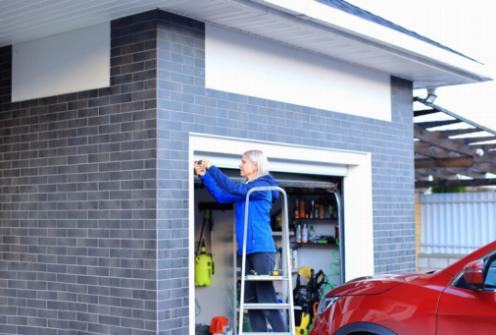DIY Garage Door Spring Replacement: A Step-by-Step Guide
22 March 2025 by Jannat R.Garage door springs play a crucial role in the smooth and reliable operation of your garage door. Over time, these springs may wear out or break, requiring replacement to ensure the door continues to function properly. While hiring a professional to replace your garage door springs is always an option, it can also be a costly one. With the right tools, materials, and knowledge, DIY garage door spring replacement is a feasible and cost-effective option for many homeowners. In this step-by-step guide, we'll walk you through the process of replacing your garage door springs, from understanding the basics to final adjustments and maintenance tips. By following this guide, you can save money and gain the satisfaction of completing a DIY project around your modern home.

Understanding the Basics of Garage Door Springs
Garage door springs are an essential component of any garage door system, as they provide the necessary tension to support the weight of the door and facilitate smooth operation. There are two main types of garage door springs: torsion springs and extension springs. Torsion springs are mounted above the door and are wound tightly to store mechanical energy, while extension springs are located on either side of the door and stretch and contract to provide the necessary tension. Understanding the type and condition of your garage door springs is crucial for safe and effective maintenance and replacement.Safety Precautions and Preparatory Work
When it comes to DIY garage door spring replacement, safety should be the top priority. Before beginning any work, it's important to take some necessary precautions and preparatory steps to ensure a safe and successful project. This includes unplugging the garage door opener, securing the door in the open position, and wearing appropriate safety gear such as gloves and eye protection. Additionally, it's crucial to carefully review the manufacturer's instructions and warnings, as well as consulting with a professional if there are any concerns about the project. By taking the time to properly prepare and prioritize safety, DIY enthusiasts can set themselves up for a smooth and secure garage door spring replacement process.Gathering Necessary Tools and Materials
Before you begin the DIY garage door spring replacement, it is important to gather all the necessary tools and materials. Here is a list of the items you will need: Safety goggles, Work gloves, Adjustable wrench, Vice grips, C-clamps, Two winding bars, Tape measure, Ladder, Replacement garage door springs, Lubricating oil and Rags.Ensure that you have all the tools and materials on hand before you start the project to avoid any interruptions or delays. Safety goggles and work gloves are essential for protecting your eyes and hands during the replacement process. The adjustable wrench, vice grips, and C-clamps will come in handy for securing and maneuvering the garage door components. Additionally, the two winding bars will be used to wind and unwind the springs. A tape measure will help you accurately measure the length and diameter of the springs.
A ladder will be necessary for reaching and working on the garage door components, while the replacement garage door springs will be the key element of the project. Lastly, lubricating oil and rags will help with the maintenance and care of the newly installed springs. Once you have all the necessary tools and materials ready, you will be well-prepared to proceed with the garage door spring replacement.